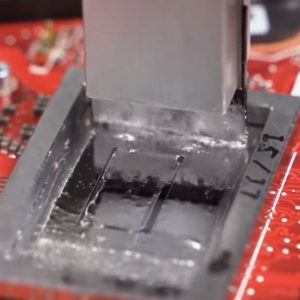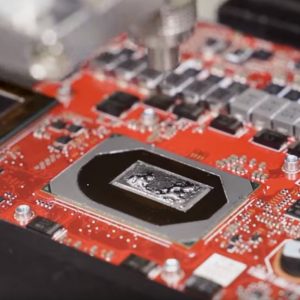ASUS Republic of Gamers today announced that all of its 2020 ROG gaming laptops featuring the latest 10th Gen Intel Core processors will have its CPU pre-applied with Thermal Grizzly Conduction liquid metal thermal compound.
Thermal Grizzly‘s Conductonaut liquid metal thermal compound has been one of the popular choices among PC enthusiasts who want to achieve the best possible cooling performance for their high-end desktop PCs. Through a year-long intensive R&D program, ASUS ROG developed a new tool that is effective and reliable to automate the liquid metal application process for mass production.
While liquid metal is definitely going to have a better thermal conductivity as compared to most of the best thermal paste available in the market, it is also electrically conductive and can cause damage to the nearby components if it’s not done correctly. For the application process to use on mass production, great precision is required and the engineers at ROG developed a two-stage application method which then translated into an automated process.
The process is done by a mechanized arm that will perform an initial brush 17 times through a customized stainless steel shim to prevent overspreading while ensuring complete coverage on the CPU die, then injects a little bit more of the liquid metal on two points of the CPU die to complete the process. Of course, ASUS has patented the technology and method which took then a year to develop to make this task possible.
The ROG liquid-metal project is ongoing in the pursuit of better cooling for gaming laptops. Last year’s ROG Mothership was the first system to take advantage of this technology, and it paved the way to several refinements enabling a much wider rollout across the full family of ROG gaming laptops with 10th Gen Intel Core processors.
This allows them to take advantage of the excellent thermal conductivity of the liquid metal on their gaming laptops, delivering better CPU performance, lower temperatures and noise level that will greatly benefit gamers today. According to ASUS, ROG engineers working on the R&D process have observed a 10-20°C reduction in temperature after the liquid metal application. As you have already known, a lower temperature will not only help the processors to sustain higher frequencies for a longer duration. but giving it more thermal headroom for higher frequencies and better performance.











